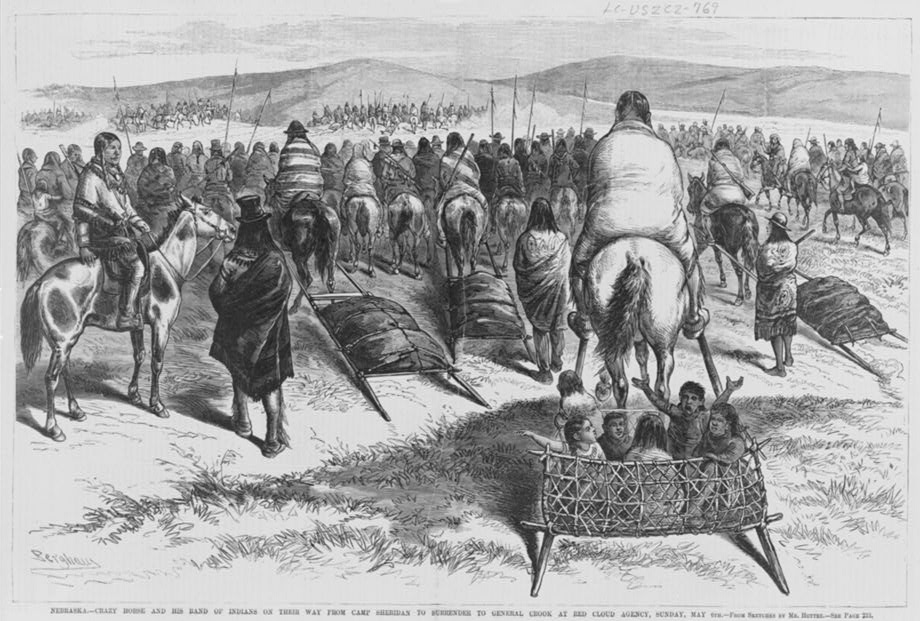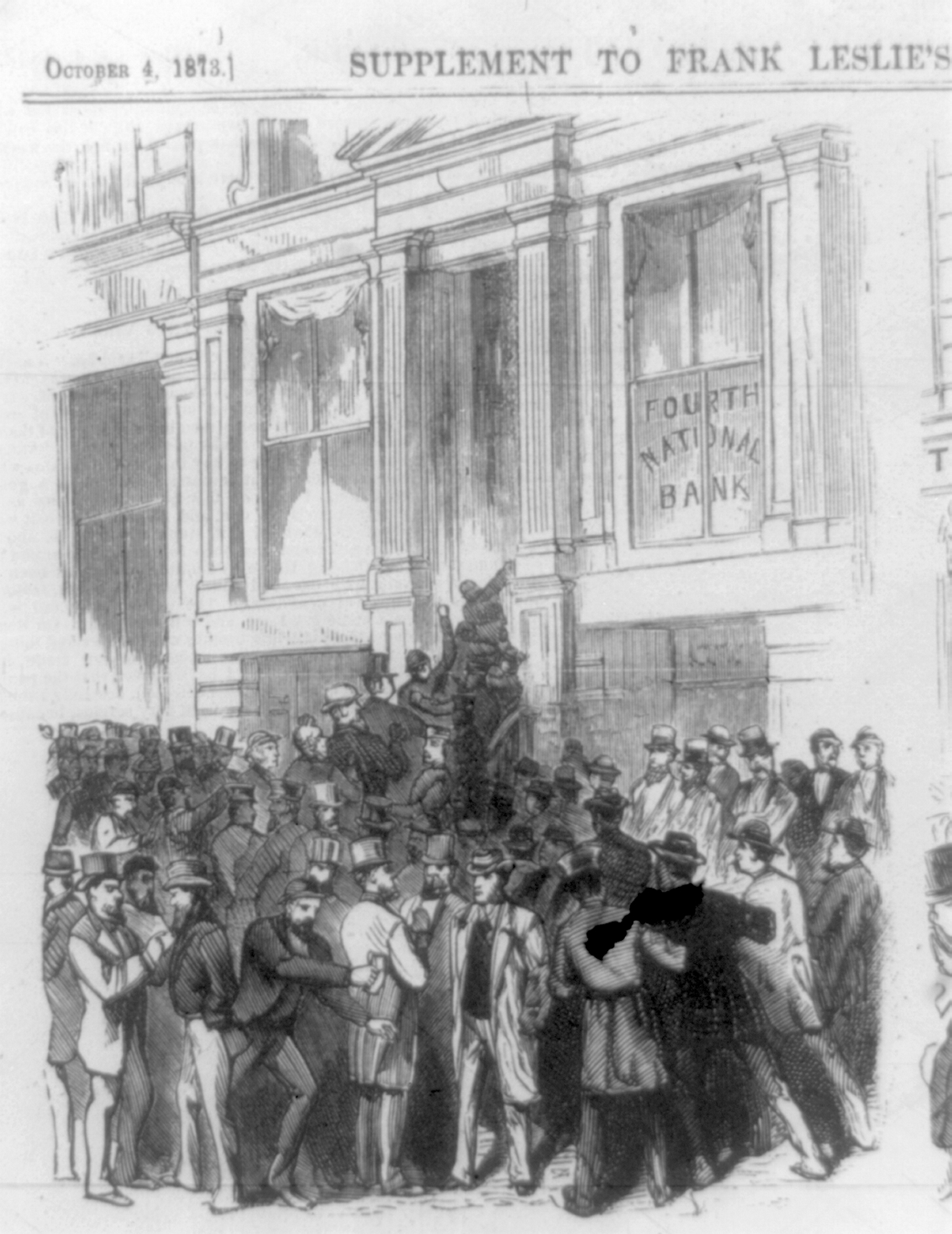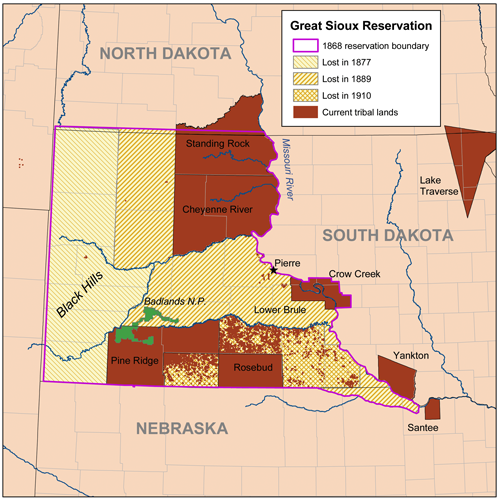|
White Swan
White Swan (18501904), or Mee-nah-tsee-us in the Crow language, was one of six Crow Scouts for George Armstrong Custer's 7th Cavalry Regiment during the 1876 campaign against the Sioux and Northern Cheyenne. At the Battle of the Little Bighorn in the Crow Indian Reservation, White Swan went with Major Reno's detachment, and fought alongside the soldiers at the south end of the village. Of the six Crow scouts at the Battle of the Little Bighorn, White Swan stands out because he aggressively sought combat with multiple Sioux and Cheyenne warriors, and he was the only Crow Scout to be wounded in action, suffering severe wounds to his hand/wrist and leg/foot. After being disabled by his wounds, he was taken to Reno's hill entrenchments by Half Yellow Face, the pipe-bearer (leader) of the Crow scouts, which no doubt saved his life. On the 27th, after the battle, Half Yellow Face made a special horse travois for White Swan and moved him down the Little Horn valley to the ''Far West'' ... [...More Info...] [...Related Items...] OR: [Wikipedia] [Google] [Baidu] |
Frank Rinehart
Frank Albert Rinehart (February 12, 1861 – December 17, 1928) was an American photographer who captured Native American personalities and scenes, especially portrait settings of leaders and members of the delegations who attended the 1898 Indian Congress in Omaha. Biography German American Rinehart was born in Lodi (now Maple Park), Illinois. He and his brother, Alfred, moved to Colorado in the 1870s and found employment at the Charles Bohm photography studio, in Denver. In 1881 the Rinehart brothers formed a partnership with Western photographer William Henry Jackson, who had achieved widespread fame for his images of the West. Under Jackson's teachings, Rinehart's perfected his professional skills, and developed a keen interest in Native American culture. Frank Rinehart and Anna, the receptionist of Jackson's studio, married and in 1885 moved to Nebraska. In downtown Omaha, Rinehart opened a studio in the Brandeis Building, where he worked until his death. Rinehart marrie ... [...More Info...] [...Related Items...] OR: [Wikipedia] [Google] [Baidu] |
Little Bighorn River
The Little Bighorn River is a tributary of the Bighorn River in the United States in the states of Montana and Wyoming. The Battle of the Little Bighorn, also known as the Battle of the Greasy Grass, was fought on its banks on June 25–26, 1876, as well as the Battle of Crow Agency in 1887. Geography The Little Bighorn rises in northern Wyoming, deep in the Bighorn Mountains, under Duncum Mountain and Burnt Mountain. The main stream flows through a deep canyon until it issues onto the plains, just at the Montana-Wyoming border. In Little Bighorn Canyon in Wyoming, the Little Bighorn receives other mountain streams as tributaries including the Dry Fork (which despite its name maintains a permanent, year-round significant flow of water into the Little Bighorn), and the West Fork of the Little Bighorn.In reference, the juxtaposition of the various geographic features in this paragraph are evident on a review of a digital based map or reliable paper map of the area, such as the ... [...More Info...] [...Related Items...] OR: [Wikipedia] [Google] [Baidu] |
Crazy Horse
Crazy Horse ( , ; – September 5, 1877) was a Lakota people, Lakota war leader of the Oglala band. He took up arms against the United States federal government to fight against encroachment by White Americans, White American settlers on Native Americans in the United States, Native American territory and to preserve the traditional way of life of the Lakota people. His participation in several famous battles of the Black Hills War on the northern Great Plains, among them the Fetterman Fight in 1866, in which he acted as a decoy, and the Battle of the Little Bighorn in 1876, in which he led a war party to victory, earned him great respect from both his enemies and his own people. In September 1877, four months after surrendering to U.S. troops under General George Crook, Crazy Horse was fatally wounded by a bayonet-wielding military guard while allegedly resisting imprisonment at Fort Robinson, Camp Robinson in Pine Ridge (region), northwestern Nebraska. He was honored by ... [...More Info...] [...Related Items...] OR: [Wikipedia] [Google] [Baidu] |
Sitting Bull
Sitting Bull ( ; December 15, 1890) was a Hunkpapa Lakota people, Lakota leader who led his people during years of resistance against Federal government of the United States, United States government policies. Sitting Bull was killed by Indian agency police accompanied by U.S. officers and supported by U.S. troops on the Standing Rock Indian Reservation during an attempt to arrest him at a time when authorities feared that he would join the Ghost Dance movement. Before the Battle of the Little Bighorn, Sitting Bull had a vision in which he saw many soldiers, "as thick as grasshoppers", falling upside down into the Lakota camp, which his people took as a foreshadowing of a major victory in which many soldiers would be killed. About three weeks later, the confederated Lakota tribes with the Northern Cheyenne defeated the 7th Cavalry Regiment, 7th Cavalry under Lt. Col. George Armstrong Custer on June 25, 1876, annihilating Custer's battalion and seeming to fulfill Sitting Bull's ... [...More Info...] [...Related Items...] OR: [Wikipedia] [Google] [Baidu] |
Fort Laramie Treaty (1868)
The Treaty of Fort Laramie (also the Sioux Treaty of 1868) is an agreement between the United States and the Oglala, Miniconjou, and Brulé bands of Lakota people, Yanktonai Dakota, and Arapaho Nation, following the failure of the first Fort Laramie treaty, signed in 1851. The treaty is divided into 17 articles. It established the Great Sioux Reservation including ownership of the Black Hills, and set aside additional lands as "unceded Indian territory" in the areas of South Dakota, Wyoming, Nebraska, and possibly Montana. It established that the US government would hold authority to punish not only white settlers who committed crimes against the tribes but also tribe members who committed crimes and were to be delivered to the government, rather than to face charges in tribal courts. It stipulated that the government would abandon forts along the Bozeman Trail and included a number of provisions designed to encourage a transition to farming and to move the tribes "closer to ... [...More Info...] [...Related Items...] OR: [Wikipedia] [Google] [Baidu] |
Panic Of 1873
The Panic of 1873 was a financial crisis that triggered an economic depression in Europe and North America that lasted from 1873 to 1877 or 1879 in France and in Britain. In Britain, the Panic started two decades of stagnation known as the "Long Depression" that weakened the country's economic leadership. In the United States, the Panic was known as the "Great Depression" until the events of 1929 and the early 1930s set a new standard. The Panic of 1873 and the subsequent depression had several underlying causes for which economic historians debate the relative importance. American inflation, rampant speculative investments (overwhelmingly in railroads), the demonetization of silver in Germany and the United States, ripples from economic dislocation in Europe resulting from the Franco-Prussian War (1870–1871), and major property losses in the Great Chicago Fire (1871) and the Great Boston Fire (1872) helped to place massive strain on bank reserves, which, in New York ... [...More Info...] [...Related Items...] OR: [Wikipedia] [Google] [Baidu] |
Treaty Of Fort Laramie (1868)
The Treaty of Fort Laramie (also the Sioux Treaty of 1868) is an agreement between the United States and the Oglala Lakota, Oglala, Miniconjou, and Brulé bands of Lakota people, Yanktonai Dakota, and Arapaho Nation, following the failure of the Treaty of Fort Laramie (1851), first Fort Laramie treaty, signed in 1851. The treaty is divided into 17 articles. It established the Great Sioux Reservation including ownership of the Black Hills, and set aside additional lands as "unceded Indian territory" in the areas of South Dakota, Wyoming, Nebraska, and possibly Montana. It established that the US government would hold authority to punish not only white settlers who committed crimes against the tribes but also tribe members who committed crimes and were to be delivered to the government, rather than to face charges in tribal courts. It stipulated that the government would abandon forts along the Bozeman Trail and included a number of provisions designed to encourage a transition ... [...More Info...] [...Related Items...] OR: [Wikipedia] [Google] [Baidu] |
Black Hills
The Black Hills is an isolated mountain range rising from the Great Plains of North America in western South Dakota and extending into Wyoming, United States. Black Elk Peak, which rises to , is the range's highest summit. The name of the range in Lakota is '. It encompasses the Black Hills National Forest. It formed as a result of an upwarping of ancient rock, after which the removal of the higher portions of the mountain mass by stream erosion produced the present-day topography. The hills are so called because of their dark appearance from a distance, as they are covered in evergreen trees. American Indian tribes have a long history in the Black Hills and consider it a sacred site. After conquering the Cheyenne in 1776, the Lakota took the territory of the Black Hills, which became central to their culture. In 1868, the federal US government signed the Fort Laramie Treaty of 1868, establishing the Great Sioux Reservation west of the Missouri River, and exempting the Black ... [...More Info...] [...Related Items...] OR: [Wikipedia] [Google] [Baidu] |
Gold
Gold is a chemical element; it has chemical symbol Au (from Latin ) and atomic number 79. In its pure form, it is a brightness, bright, slightly orange-yellow, dense, soft, malleable, and ductile metal. Chemically, gold is a transition metal, a group 11 element, and one of the noble metals. It is one of the least reactivity (chemistry), reactive chemical elements, being the second-lowest in the reactivity series. It is solid under standard temperature and pressure, standard conditions. Gold often occurs in free elemental (native state (metallurgy), native state), as gold nugget, nuggets or grains, in rock (geology), rocks, vein (geology), veins, and alluvial deposits. It occurs in a solid solution series with the native element silver (as in electrum), naturally alloyed with other metals like copper and palladium, and mineral inclusions such as within pyrite. Less commonly, it occurs in minerals as gold compounds, often with tellurium (gold tellurides). Gold is resistant to ... [...More Info...] [...Related Items...] OR: [Wikipedia] [Google] [Baidu] |
Great Sioux War Of 1876
The Great Sioux War of 1876, also known as the Black Hills War, was a series of battles and negotiations that occurred in 1876 and 1877 in an alliance of Lakota people, Lakota Sioux and Northern Cheyenne against the United States. The cause of the war was the desire of the US government to obtain ownership of the Black Hills. Gold had been discovered in the Black Hills, settlers began to encroach onto Native Americans in the United States, Native American lands, and the Sioux and the Cheyenne refused to cede ownership. Traditionally, American military and historians place the Lakota at the center of the story, especially because of their numbers, but some Native Americans believe the Cheyenne were the primary target of the American campaign. Among the many battles and skirmishes of the war was the Battle of the Little Bighorn - often known as ''Custer's Last Stand'' and the most storied of the many encounters between the US Army and mounted Plains Indians. Despite the Indian vict ... [...More Info...] [...Related Items...] OR: [Wikipedia] [Google] [Baidu] |
White Swan, Crows
White is the lightest color and is achromatic (having no chroma). It is the color of objects such as snow, chalk, and milk, and is the opposite of black. White objects fully (or almost fully) reflect and scatter all the visible wavelengths of light. White on television and computer screens is created by a mixture of red, blue, and green light. The color white can be given with white pigments, especially titanium dioxide. In ancient Egypt and ancient Rome, priestesses wore white as a symbol of purity, and Romans wore white togas as symbols of citizenship. In the Middle Ages and Renaissance a white unicorn symbolized chastity, and a white lamb sacrifice and purity. It was the royal color of the kings of France as well as the flag of monarchist France from 1815 to 1830, and of the monarchist movement that opposed the Bolsheviks during the Russian Civil War (1917–1922). Greek temples and Roman temples were faced with white marble, and beginning in the 18th century, with ... [...More Info...] [...Related Items...] OR: [Wikipedia] [Google] [Baidu] |








